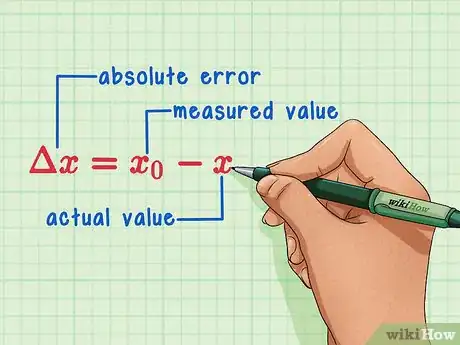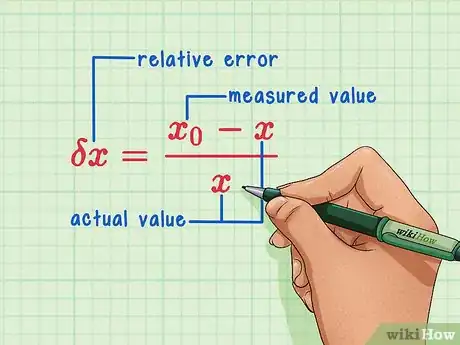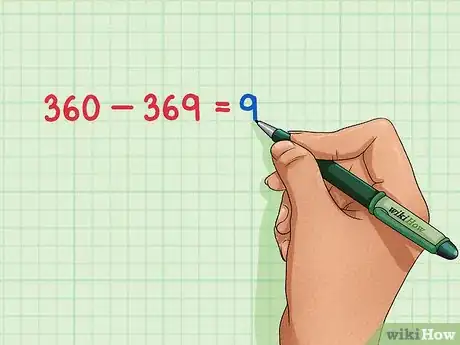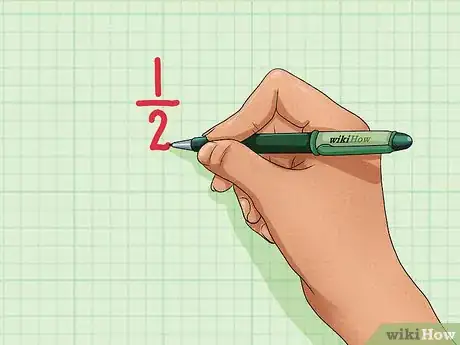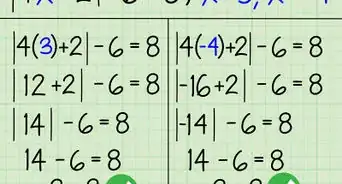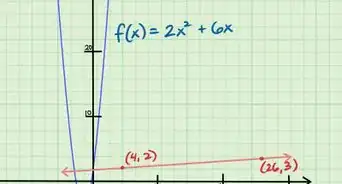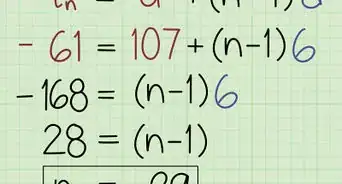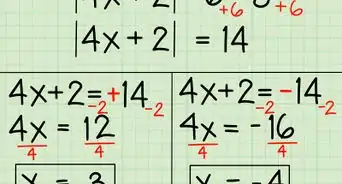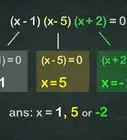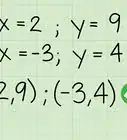This article was co-authored by wikiHow Staff. Our trained team of editors and researchers validate articles for accuracy and comprehensiveness. wikiHow's Content Management Team carefully monitors the work from our editorial staff to ensure that each article is backed by trusted research and meets our high quality standards.
This article has been viewed 199,216 times.
Learn more...
Absolute error is the difference between the measured value and the actual value.[1] It is one way to consider error when measuring the accuracy of values. If you know the actual and measured values, calculating the absolute error is a simple matter of subtraction. Sometimes, however, you may be missing the actual value, in which case you should use the maximum possible error as the absolute error.[2] If you know the actual value and the relative error, you can work backwards to find the absolute error.
Steps
Using the Actual Value and Measured Value
-
1Set up the formula for calculating the absolute error. The formula is , where equals the absolute error (the difference, or change, in the measured and actual value), equals the measured value, and equals the actual value.[3]
-
2Plug the actual value into the formula. The actual value should be given to you. If not, use a standardly accepted value. Substitute this value for .[4]
- For example, you might be measuring the length of a football field. You know that the actual, or accepted length of a professional American football field is 360 feet (including both end zones). So, you would use 360 as the actual value:.
Advertisement -
3Find the measured value. This will be given to you, or you should make the measurement yourself. Substitute this value for .
- For example, if you measure the football field and find that it is 357 feet long, you would use 357 as the measured value:.
-
4Subtract the actual value from the measured value. Since absolute error is always positive, take the absolute value of this difference, ignoring any negative signs. This will give you the absolute error.[5]
- For example, since , the absolute error of your measurement is 3 feet.
Using the Actual Value and Relative Error
-
1Set up the formula for relative error. The formula is , where equals the relative error (the ratio of the absolute error to the actual value), equals the measured value, and equals the actual value.[6]
-
2Plug in the value for the relative error. This will likely be a decimal. Make sure you substitute it for .
- For example, if you know that the relative error is .025, your formula will look like this: .
-
3Plug in the value for the actual value. This information should be given to you. Make sure you substitute this value for .
- For example, if you know that the actual value is 360 ft, your formula will look like this: .
-
4Multiply each side of the equation by the actual value. This will cancel out the fraction.
- For example:
- For example:
-
5Add the actual value to each side of the equation. This will give you the value of , giving you the measured value.
- For example:
- For example:
-
6Subtract the actual value from the measured value. Since absolute error is always positive, take the absolute value of this difference, ignoring any negative signs. This will give you the absolute error.[7]
- For example, if the measured value is 369 ft, and the actual value is 360 feet, you would subtract . So, the absolute error is 9 feet.
Using the Maximum Possible Error
-
1Determine the measuring unit. This is the “to the nearest” value. This might be explicitly stated (for example, “The building was measured to the nearest foot.”), but it doesn’t have to be. To determine the measuring unit, just look at what place value the measurement is rounded to.
- For example, if the measured length of a building is stated as 357 feet, you know that the building was measured to the nearest foot. So, the measuring unit is 1 foot.
-
2Determine the maximum possible error. The maximum possible error is the unit of measure.[8] You might see it listed as a number.
- For example, if the unit of measure is a foot, the maximum possible error is .5 ft. So you might see that the measurement of a building is . This means that the actual value of the building’s length could be .5 ft less or .5 ft more than the measured value. If it was any less/more, the measured value would have been 356 or 358 feet.
-
3Use the maximum possible error as the absolute error.[9] Since absolute error is always positive, take the absolute value of this difference, ignoring any negative signs. This will give you the absolute error.
- For example, if you find the measurement of a building to be , the absolute error is .5 ft.
Community Q&A
-
QuestionHow do I find absolute error of any equation?
 DonaganTop AnswererAn equation does not contain an "absolute error." Re-read the introduction above.
DonaganTop AnswererAn equation does not contain an "absolute error." Re-read the introduction above. -
QuestionHow do I find the root value of a 6-digit number?
 DonaganTop AnswererIf you're asking about square roots, see Calculate a Square Root by Hand.
DonaganTop AnswererIf you're asking about square roots, see Calculate a Square Root by Hand. -
QuestionWhat is the absolute error in 2.11?
 DonaganTop AnswererAs explained above, the concept of "absolute error" involves both a measured value and an "actual" value.
DonaganTop AnswererAs explained above, the concept of "absolute error" involves both a measured value and an "actual" value.
References
- ↑ http://mathworld.wolfram.com/AbsoluteError.html
- ↑ http://www.mathsisfun.com/measure/error-measurement.html
- ↑ http://mathworld.wolfram.com/AbsoluteError.html
- ↑ https://www.calculadoraconversor.com/en/absolute-error/
- ↑ https://www.omnicalculator.com/statistics/relative-error#how-to-calculate-the-absolute-error-and-relative-error
- ↑ http://mathworld.wolfram.com/RelativeError.html
- ↑ https://www.omnicalculator.com/statistics/relative-error
- ↑ http://www.mathsisfun.com/measure/error-measurement.html
- ↑ http://www.mathsisfun.com/measure/error-measurement.html
About This Article
To calculate the absolute error, use the formula, “Absolute Error = Measured Value - Actual Value.” Begin by plugging the actual value into the formula, which will either be given to you or is the standardly accepted value. Then, make a measurement and put the measured value into the formula. Finally, subtract the actual value from the measure value to calculate the absolute error. If there are any negative signs, ignore them when you record your answer. To learn how to find the absolute error if you don’t have the measured value, keep reading.
